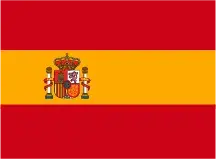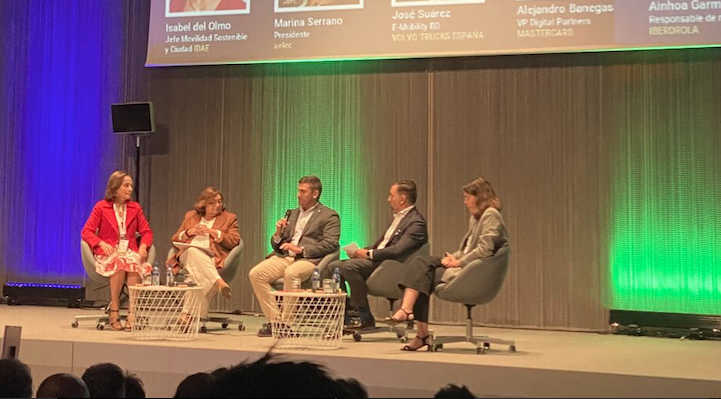In parallel with the announcement of the extension of the Moves III Plan and before the summer, the Government announced the creation of the Moves Corredores to deploy charging points in shaded areas and a new Moves Flotas Plus.
More than a month after the public consultation ended, there was no news on the matter, but that is over.
With the help of Isabel del Olmo, Director of the Sustainable Mobility and City department of IDAE, the sector was able to be updated and anxiety was calmed:
“The preliminary rules for Moves Flotas Plus will be published in the coming weeks, while we hope that the Corredores will be published before the end of the year. We want the entire sector to see them before they are made official.”
The official’s intentions are set on this, as Mobility Portal Europe has gathered in the coverage of her presentation within the framework of CEVE 2024, that cannot be denied.
But the reality is that exact dates cannot be given yet… Why?

There are various factors that influence the outcome of each of the subsidy packages.
To refresh our readers’ memories, MOVES Flotas Plus will be a plan aimed at fleet owners.
That is to say, companies wishing to incorporate more than 100 electric vehicles will be eligible.
The initiative aims to encourage the electrification of fleets in Spain of companies that operate in at least two Autonomous Communities.
And that’s not all.
The regulation to be drawn up will establish the regulatory bases for the granting of subsidies in the following types of action:
- Acquisition of electric vehicles;
- Installation of electric charging points in the fleet parking lot, as part of the company’s electrification project;
- Fleet management and/or training costs associated with fleet electrification;
- «Retrofit» or modification of the propulsion method of vehicles and
- Costs of the feasibility analysis of the electrification of the fleet and/or costs of managing the application and justification of the aid.
“We also launched the public consultation on Moves Corredores from June 28 to July 12, after which we received 13 objections and we are working on them,” explained Del Olmo in his speech and the entire audience did not take their attention for a second.
The focus of this process is on being able to understand the needs of the sector first-hand and to be able to design this new program based on its needs.
Issues related to the centralisation of MOVES operations were one of the main themes reiterated in each of the allegations received by MITECO and IDAE.

Likewise, achieving minimum power requirements for projects to be eligible is also placed at the centre of the equation.
During her participation in the congress, the IDAE official noted and summarized the questions that were received from the sector.
The presentation was made without the need for a paper in hand or any reminder, focusing on the allegations received.
At this point, one aspect that did not lose relevance was the figure of the new Commission Regulation EU 2023/1315, of June 23, 2023, and in particular Article 36 bis.
This determines the operation of this new aid program and, as detailed by the official:
“This element helps us define what is eligible for a charging infrastructure subsidy plan.”
An example of this could be how today any investment made in renewable generation or storage associated with the charging point can be contemplated.
To which was added:
“We are working on this programme based on the public consultation that was carried out and the entire sector will also have the opportunity to learn about the bases prior to its official launch.”
What is Moves Corredores?
The idea is to improve connectivity, the viability of electric vehicles on long-distance routes and to eliminate concerns regarding electric mobility.
While also complying with Regulation (EU) 2023/1804 of the European Parliament, which establishes requirements for alternative fuel infrastructure.
The regulation will establish the regulatory bases for the granting of subsidies to finance investments in the installation of public access charging points, both on the state and regional road networks.
This is provided that they affect at least two autonomous communities.
This Moves Corredores addresses a recurring complaint in the sector, linked to the shortage of charging stations in rural areas or shaded areas.
In this regard, the Rural Decarbonisation Observatory of the Association of Electric Energy Distributors (CIDE) highlights the importance of these regions in the transition towards clean mobility.
According to data from the DGT, in these locations in the country, around 50 per cent of the vehicle fleet is over 15 years old, while at the national level, older vehicles represent less than 40 per cent.
The renewal of these vehicles offers the ideal opportunity to promote the electrification of mobility in rural areas.
In this context, some companies are also assuming responsibility to resolve this problem.
Among them, Galp and BMW Spain.
Together they aim to develop a rural electrification programme to boost connectivity and sustainable mobility between these areas.
The companies have formed an alliance with the aim of creating an initial network of more than 100 ultra-fast charging points, with a capacity of up to 180 kilowatts (kW).
This will be deployed along the main medium and long distance corridors in the national territory.

What solutions could be complemented by Moves Corredores?
MITECO mentions the possibility of awarding tenders or competitions for the development of this type of infrastructure, as well as the implementation of dissemination and communication measures.
And not only that.
It also provides for the programme to be accompanied by the design of a renewable electricity credit mechanism in the transport sector, known as e-Credits.
How does this system work?
This would allow charging point operators to generate credits for the clean energy supplied, which could be sold to fuel suppliers to help them meet their sustainability obligations.
They could also improve the return on investment in “refuelling” infrastructure and facilitate the financing of new projects without the need for public funds.








